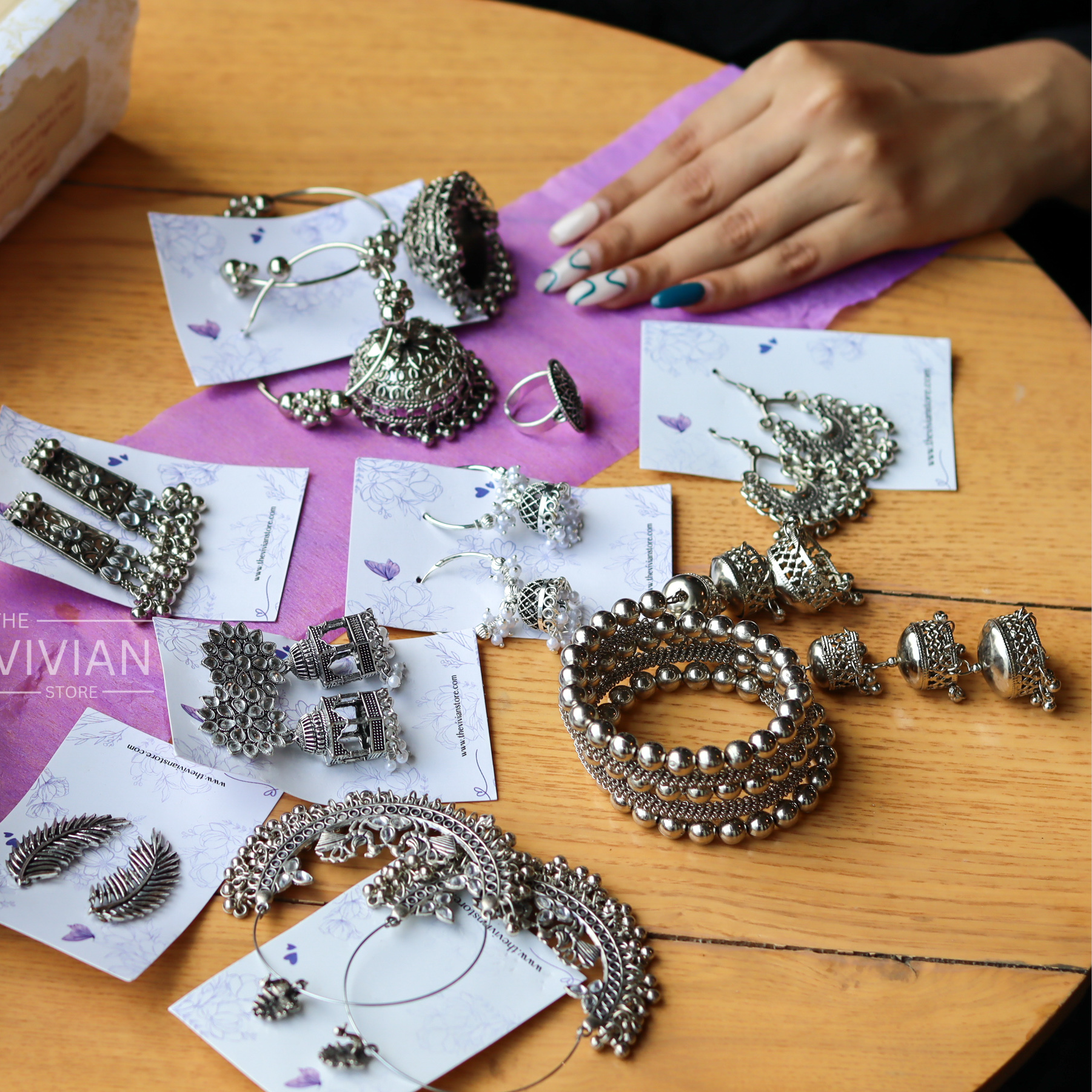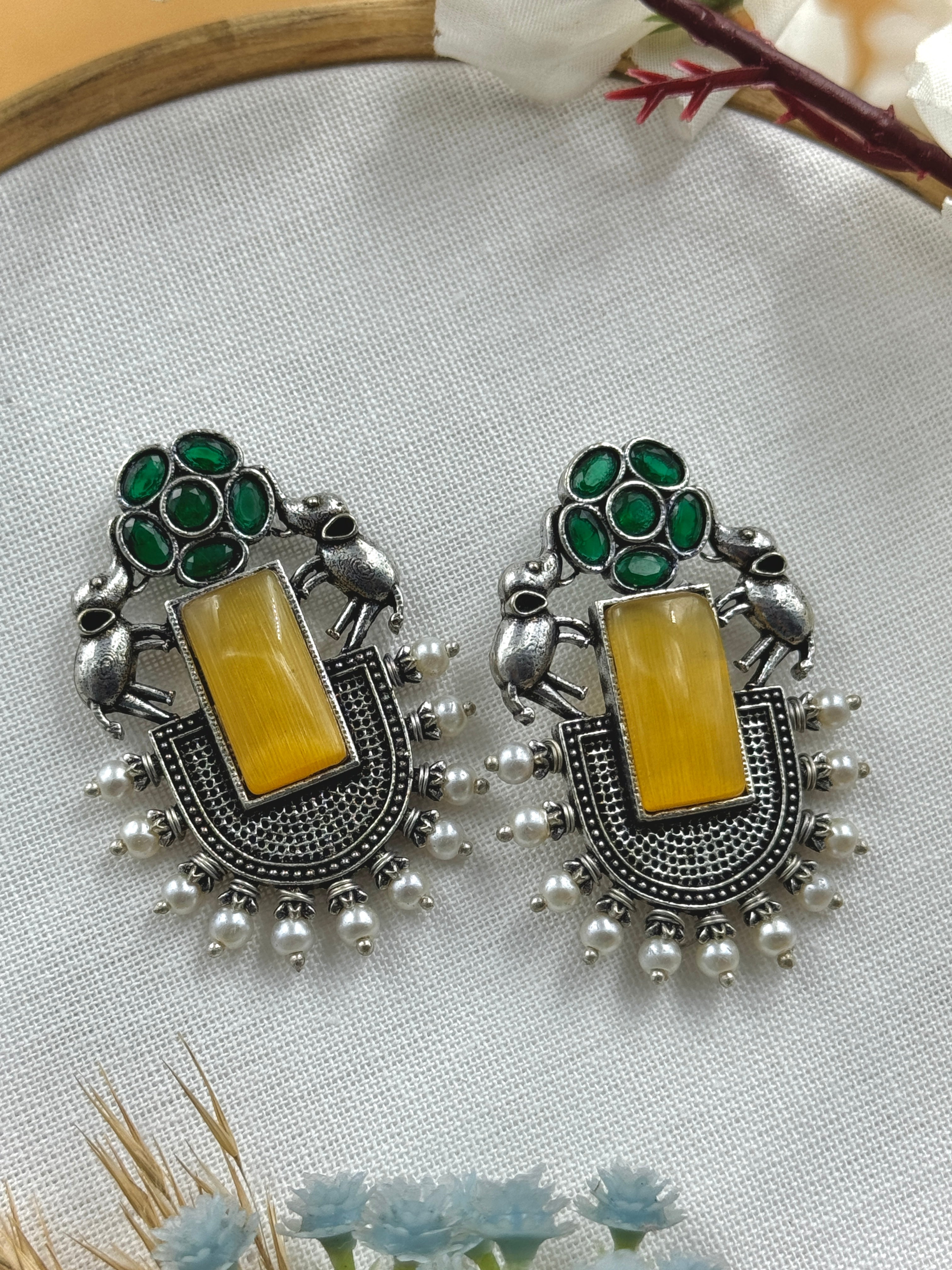Jhumka earrings, with their intricate designs and timeless appeal, have been a staple in traditional jewelry collections for centuries. These bell-shaped earrings not only hold a significant place in fashion but are also deeply rooted in mythology and folklore. They are often associated with various cultural narratives, symbolizing beauty, femininity, and divinity. This blog delves into the fascinating world of jhumka earrings in mythology and folklore, exploring their historical background, symbolic meanings, and their influence on modern jewelry design.
Historical Background of Jhumka Earrings
The history of jhumka earrings dates back to ancient civilizations. These earrings have been unearthed in archaeological sites, suggesting their prominence in ancient societies. Traditionally, jhumkas were crafted in gold and adorned with precious stones, signifying wealth and status. Over the centuries, the designs evolved, incorporating regional styles and materials, yet retaining their distinctive bell shape.
In many cultures, jhumkas are more than just ornaments; they are considered auspicious and are often worn during significant life events such as weddings and festivals. Their intricate designs and craftsmanship reflect the rich cultural heritage and artistic traditions of the regions they come from.
Jhumka Earrings in Indian Mythology
In Indian mythology, jhumka earrings hold a special place. They are often depicted as ornaments worn by deities and divine beings, symbolizing their divine beauty and power.
Hindu Mythology
In Hindu mythology, goddesses such as Lakshmi, the goddess of wealth, and Parvati, the goddess of power and love, are often portrayed wearing jhumka earrings. These earrings symbolize prosperity, grace, and divine femininity. In temples, idols of these goddesses are adorned with gold jhumkas, reflecting their revered status and divine attributes.
Epic Tales
Jhumka earrings are also mentioned in Indian epics like the Mahabharata and the Ramayana. In these texts, royal women and divine characters are often described wearing ornate jhumkas. For instance, Sita, the wife of Lord Rama, is often depicted wearing jhumkas, symbolizing her royal lineage and beauty. These references highlight the cultural significance of jhumka earrings in ancient India, where they were considered symbols of elegance and nobility.
Jhumka Earrings in Folk Tales and Legends
Jhumka earrings feature prominently in various regional folk tales and legends, each narrating unique stories and moral lessons.
Rajasthani Legends
In Rajasthan, a region known for its rich cultural heritage, jhumka earrings are an integral part of bridal attire. Folk tales from this region often describe brides adorned with jhumkas as they prepare for their wedding ceremonies. These stories emphasize the earrings' role in symbolizing marital bliss and familial bonds. The intricate designs of Rajasthani jhumkas, often featuring meenakari (enamel work) and kundan (stone setting), reflect the region's artistic traditions.
South Indian Lore
In South Indian folklore, jhumkas are commonly associated with classical dance forms such as Bharatanatyam and Kuchipudi. Dancers wear elaborate jhumkas as part of their traditional attire, symbolizing their connection to divine art forms. These earrings, often embellished with temple motifs and intricate gold work, add to the dancers' grace and elegance, enhancing their performance.
Jhumka Earrings in Other Cultures
While jhumka earrings are predominantly associated with Indian culture, similar styles appear in the folklore of other cultures as well.
Middle Eastern Folklore
In Middle Eastern folklore, earrings resembling jhumkas are often depicted in stories from "One Thousand and One Nights" (Arabian Nights). These ornate earrings symbolize wealth, beauty, and allure. Characters in these tales, particularly princesses and queens, are often described wearing such earrings, highlighting their royal status and enchanting charm.
Southeast Asian Myths
In Southeast Asian countries like Indonesia and Thailand, traditional earrings similar to jhumkas feature in local myths and cultural practices. These earrings, often made with local materials and craftsmanship, reflect the region's artistic heritage and are worn during important ceremonies and festivals.
Jhumkas in Contemporary Mythology and Popular Culture
In modern times, jhumka earrings continue to be celebrated in popular culture, particularly in Bollywood and television.
Bollywood and Television
Bollywood has played a significant role in popularizing jhumka earrings. Iconic actresses like Madhuri Dixit, Aishwarya Rai, and Deepika Padukone have worn jhumkas in films, making them a fashion statement. Movies such as "Devdas," "Jodhaa Akbar," and "Padmaavat" feature elaborate jhumka designs, showcasing their timeless appeal. Similarly, popular Indian television shows often depict female characters wearing jhumkas, symbolizing their traditional values and cultural roots.
Modern Interpretations
Contemporary designers draw inspiration from mythology and folklore to create modern jhumka designs. These designs often blend traditional elements with contemporary styles, appealing to the modern wearer while retaining their cultural essence. For example, fusion jhumkas combining geometric shapes with traditional motifs are becoming increasingly popular, reflecting a blend of old and new.
Feminine Power
In many myths and stories, jhumka earrings symbolize feminine power and grace. They are often associated with goddesses and royal women, highlighting their divine and regal attributes. Wearing jhumkas is seen as a way for women to connect with these powerful symbols and express their own strength and elegance.
Cultural Identity
Jhumka earrings also play a significant role in expressing cultural and regional identity. Different regions have their unique jhumka designs, reflecting local traditions, materials, and craftsmanship. By wearing these earrings, individuals celebrate their cultural heritage and showcase their regional pride.
Jhumka Earrings in Art and Literature
The allure of jhumka earrings extends to art and literature, where they are often depicted in various forms.
Classical Literature
In classical literature, jhumka earrings are frequently mentioned in poetry and prose. Ancient poets and writers often described the beauty of women adorned with jhumkas, emphasizing their elegance and charm. These literary references highlight the earrings' cultural significance and their role in enhancing feminine beauty.
Art and Sculpture
Jhumka earrings are a common motif in ancient sculptures and paintings. In temples and historical monuments, idols and sculptures often feature figures wearing jhumkas, reflecting their importance in religious and cultural contexts. Traditional paintings and murals also depict women wearing jhumkas, showcasing their timeless appeal.
Influence on Modern Jewelry Design
Ancient myths and folk stories continue to inspire contemporary jewelry designers, leading to the revival of traditional jhumka designs with modern twists.
Revival of Traditional Designs
Modern designers often revisit ancient designs, incorporating traditional elements into contemporary jewelry. This revival of traditional jhumka designs reflects a growing appreciation for cultural heritage and artisanal craftsmanship. For instance, jhumkas with intricate filigree work or temple motifs are making a comeback, appealing to those who value traditional artistry.
Innovations and Trends
Innovative designs and trends are emerging, blending traditional jhumka elements with modern aesthetics. These include minimalist jhumkas, fusion designs, and eco-friendly jhumkas made from sustainable materials. Such innovations cater to the tastes of modern consumers while preserving the cultural essence of jhumka earrings.
Conclusion
Jhumka earrings, with their rich history and cultural significance, continue to enchant and inspire. From ancient myths and folk tales to modern popular culture, these earrings symbolize beauty, femininity, and cultural heritage. Their timeless appeal lies in their ability to blend tradition with contemporary styles, making them a cherished accessory for generations. As we celebrate the enduring charm of jhumka earrings, we also honor the stories and traditions that have shaped their legacy.
So, next time you wear a pair of jhumkas, remember the rich history and cultural narratives they carry, and let them add a touch of timeless elegance to your look. If you have any stories or experiences related to jhumka earrings, feel free to share them in the comments. Let's continue the tradition of celebrating these beautiful and meaningful pieces of jewellery.




Leave a comment
This site is protected by hCaptcha and the hCaptcha Privacy Policy and Terms of Service apply.